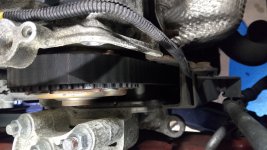PsFiat
Member
- Joined
- Sep 1, 2013
- Messages
- 692
- Points
- 123
Hello Fiatistas,
I have a 2014 500s, manual with a 1.4 engine.
Mileage: about 17,000 miles (28,000 kms)
After a recent service, the advisor told me that at 4 years, regardless of mileage I’ll need the timing belt changed ... it is specified service item at 4 years, and I have confirmed this- pricey too.
Just curious what others think, seems to be very low mileage, and 4 years isn’t all that long a time. I’m considering putting it off for 6-12 months.
I have a 2014 500s, manual with a 1.4 engine.
Mileage: about 17,000 miles (28,000 kms)
After a recent service, the advisor told me that at 4 years, regardless of mileage I’ll need the timing belt changed ... it is specified service item at 4 years, and I have confirmed this- pricey too.
Just curious what others think, seems to be very low mileage, and 4 years isn’t all that long a time. I’m considering putting it off for 6-12 months.


